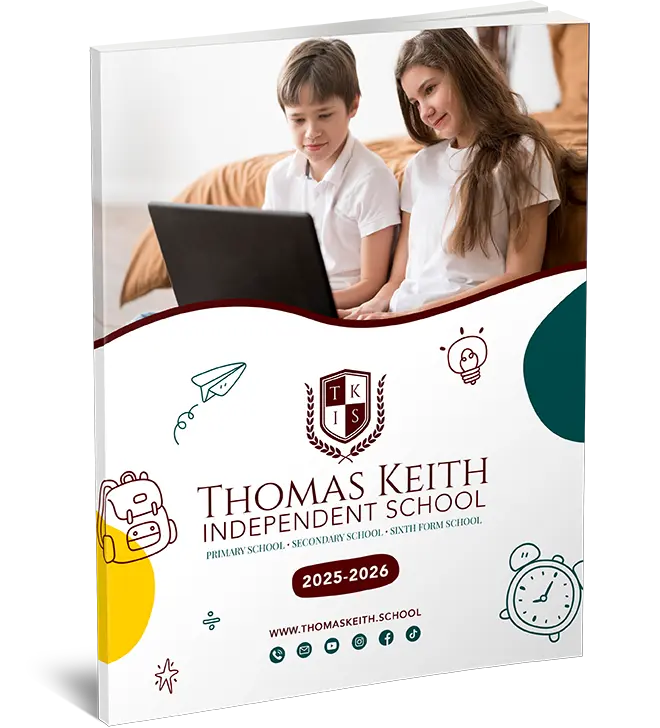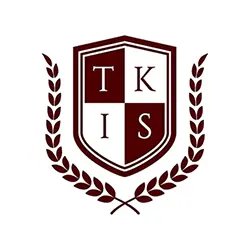Online Upper Secondary Education: Pros and Cons
The Thomas Keith School pioneered upper secondary online education, introducing new standards many traditional institutions have yet to adopt. We evaluate this new educational strategy here.

+ Flexibility and Convenience
Like the Thomas Keith School, online upper secondary education has many benefits, including flexibility. Students can study about personal obligations. This makes it easier for students to combine educational, emotional, and family time.
+ Rich Resources and Customised Learning
Interactive movies, quizzes, and eBooks are available 24/7 in online learning. The Thomas Keith School also uses cutting-edge learning management technologies to tailor the curriculum to each student’s learning style.
+ Cheaper
The Thomas Keith School isn’t free but cheaper than traditional schooling without sacrificing quality. This educational methodology is affordable because transportation, meals, and textbooks are more inexpensive.
– Lack of Social Interaction
Online schooling reduces social interaction, which is the main drawback. Students can’t play sports or join clubs in virtual classrooms, which are crucial to their social growth. Virtual group activities, peer-to-peer video conferences, and other online interactions help the Thomas Keith School address this issue.
– Tech Issues
Not all students have stable internet connections or appropriate gadgets for online learning. Technical issues also disturb lessons. However, the Thomas Keith School has worked to minimise these challenges by providing a solid technical support system and ensuring all students have the appropriate technology to engage in their classes.
– Demands Self-Control
Online education is convenient, but it needs self-discipline and time management. Some children may need the framework of a classroom. However, Thomas Keith School has provided tools and ways to help pupils develop these critical abilities.
Online Upper Secondary Time Management
In the Thomas Keith School’s digital learning environment, time management is essential. Online learning challenges pupils and helps them become self-sufficient, organised, and disciplined. This blog post discusses online secondary education time management tips.
- Be Flexible
Thomas Keith School online learning is flexible. Students can time their studies around personal responsibilities to improve learning efficiency. Flexibility needs self-discipline. Students should follow a school day schedule to provide focused study time. - Plan Your Education
Time management requires planning. The Thomas Keith School advises students to review their syllabi before each term. Understanding course requirements, assessment deadlines, and learning objectives helps students plan a study schedule and allot time for each subject. - Prioritise Tasks
Prioritise assignments when studying several disciplines. The Eisenhower Matrix, which prioritises tasks, is helpful. This helps students focus on things that contribute most to their educational goals, saving precious study time.

- Online Resources
The Thomas Keith School offers many online study materials. Use these tools to improve your time management. Digital calendars and apps like Trello can remind you of deadlines. - Pause Often
Taking pauses boosts productivity. The Pomodoro Technique divides work into 25-minute “Pomodoros” with five-minute breaks. This strategy keeps you focused and prevents burnout. - Contact Teachers
The Thomas Keith School has caring teachers. If you can’t manage your time, tell your teachers. They can aid you with learning strategies, tools, and guidance. - Be Mindful
Finally, mindfulness helps with time management. Your habits, learning style, and daily productivity can inform time management. It can show you when you work best, how long you can concentrate, and how to keep organised.
Upper Secondary Education Online Platform Selection
Selecting an upper-secondary online platform takes time and effort. It’s a complicated choice with many aspects. This blog post discusses making this essential decision using the Thomas Keith School’s online education model.
1. Educational Quality
Online schooling is top-notch. Find a reputable platform like the Thomas Keith School. The curriculum, teaching staff, and post-secondary success rate can decide this.
2. LMS
Online education uses LMS to connect students, teachers, and curriculum. User-friendly and robust LMSs quickly access course materials, assignments, grades, and teacher feedback. A complex yet intuitive LMS enhances student learning at the Thomas Keith School.
3. Customisation
Online learning lets you learn at your speed. Choose a platform with flexibility and personalised learning pathways. For instance, the Thomas Keith School allows students to arrange their studies around personal obligations and customises its curriculum to their learning styles.
4. Student Assistance
Online studying shouldn’t be lonely. Quality online institutions like the Thomas Keith School offer academic, technological, and counselling help. Check a platform’s support before choosing it for online learning.
5. Cost-effective
Consider what you’re getting for your money, not just the cost. Compare each platform’s curriculum, resources, support, and learning experience instead of just price. The Thomas Keith School provides high-quality, affordable education.
6. Socialisation
Socialising online is essential. Online schools with virtual clubs, discussion forums, and joint projects create a student community. Virtual connection promotes social and academic development at Thomas Keith School.
Improving Virtual Upper Secondary Teacher-Student Engagement
Online learning makes meaningful teacher-student connections difficult. The Thomas Keith School, a top online secondary school, uses creative methods to encourage such relationships in the virtual classroom. This article discusses successful engagement cultivation.

1. Communicate
Virtual learning relies on good communication. Thomas Keith School teachers communicate with pupils using email, video conferencing, and the learning management system. These platforms provide quick feedback and help students navigate online learning.
2. Customised Education
Personalised learning makes online education appealing. Teachers at Thomas Keith School learn their pupils’ learning styles and preferences to customise their lessons and materials. Personalisation improves student-teacher relationships and academic performance.
3. Interactive Instruction
Online education thrives on interactivity. Thomas Keith School teachers use quizzes, polls, and breakout sessions during live lessons to engage students and foster active learning.
4. Learner-Centered
A student-centred approach helps teachers and students connect. Thomas Keith School teachers help kids pursue their interests. This ownership motivates pupils to interact with teachers, improving learning.
5. Real-time Feedback
Timely feedback improves student development and teacher-student relationships. Teachers at Thomas Keith School give real-time feedback during live lessons and swiftly grade assignments with extensive insights, helping students identify their strengths and weaknesses.
6. Telework
Virtual office hours also promote contact. Teachers at the Thomas Keith School have “office hours” where students can discuss academic issues, seek help, or simply catch up, ensuring personal attention in the virtual setting.
7. Community-Building
Community building encourages interaction. Thomas Keith School teachers aim to establish a connected virtual classroom. They lead group projects and discussions that boost learning and student belonging.
Upper Secondary Online Education: Passing Standardised Tests
Online learning is convenient and flexible, but preparing for standardised tests and exams takes time and effort. The innovative online Thomas Keith School has developed techniques to assist pupils to succeed in these high-stakes tests. This post explores these methods to help pupils succeed academically.
- Understand Format
Exam preparation begins with test format knowledge. The Thomas Keith School educates students about exam format, scoring, and content. This understanding helps pupils revise deliberately and efficiently.
- Use Online Resources
Interactive quizzes, practice papers, and video lessons are available online at the Thomas Keith School for revision. These tools assist students in assessing their learning, identifying areas for development, and improving exam skills.
- Plan Your Studies
Exam prep requires time management. Students should allocate time for each course. Spaced repetition, which is helpful for long-term learning, is encouraged at Thomas Keith School.
- Engaged Learning
Active learning should replace reading textbooks and notes. Self-quizzing, summarising, and instructing can help you remember and understand. These active learning methods help Thomas Keith School pupils recall and comprehend the subject.
- Test Simulation
Exam-like practice can boost student performance. Mock exams at Thomas Keith School simulate timed testing to prepare students. This decreases test anxiety and improves time management during exams.
- Ask Teachers
Thomas Keith School faculty are accessible for academic assistance. Teachers should help students with complex ideas, practice examinations, and direction. These exchanges offer essential insights and feedback.
- Take Care of Yourself
Preparing for exams is crucial, but so is staying healthy. Breaks, meals, exercise, and sleep improve cognitive performance and productivity. Holistic well-being affects academic success. Hence Thomas Keith School emphasises it.




